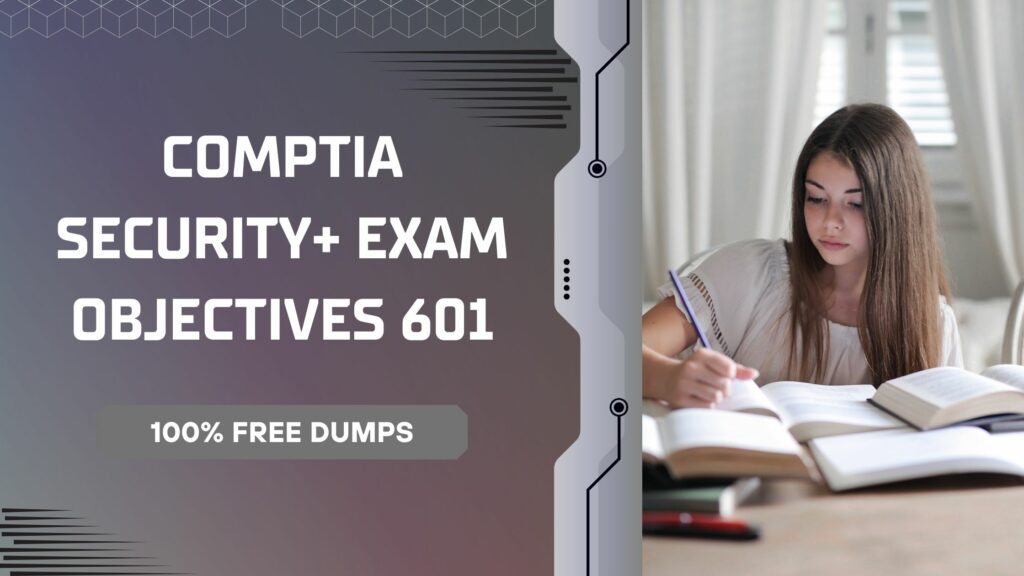Overview of CompTIA Security+ Exam Objectives 601
The CompTIA Security+ certification is a globally recognized benchmark for IT security professionals. The latest iteration, known as the CompTIA Security+ Exam Objectives 601, delineates the essential skills and knowledge required to perform core security functions. This comprehensive framework is designed to ensure that candidates are well-versed in a wide array of cybersecurity disciplines.
At the heart of the CompTIA Security+ Exam Objectives 601 are key areas that include threats, attacks, and vulnerabilities, technologies and tools, architecture and design, identity and access management, risk management, and cryptography and PKI. Each of these categories delves into the specifics of how to identify, combat, and mitigate security risks. The objectives also place a strong emphasis on practical skills, with a significant portion of the exam dedicated to performance-based questions. This hands-on approach ensures that candidates not only understand theoretical concepts but can also apply them in real-world scenarios.
Preparing for the CompTIA Security+ Exam requires a thorough understanding of these objectives. Candidates are expected to demonstrate their proficiency in implementing secure network architecture, installing and configuring security systems, and identifying legal and regulatory issues related to IT security. By mastering the CompTIA Security+ Exam Objectives 601, individuals prove their capability to secure a network and manage risk effectively, marking a significant step forward in their cybersecurity career.
Key changes in the CompTIA Security+ Exam Objectives 601
The CompTIA Security+ Exam Objectives 601 introduces several key updates that reflect the evolving landscape of cybersecurity. These changes are designed to ensure that the certification remains relevant and continues to serve as a vital benchmark for IT security professionals worldwide. One of the most notable adjustments is the increased emphasis on practical, hands-on skills. This shift acknowledges the critical importance of applying theoretical knowledge in real-world scenarios to effectively combat cyber threats.
Furthermore, the updated objectives expand on the coverage of emerging technologies and their associated security challenges. This includes a deeper focus on cloud computing, IoT devices, and mobile security, areas that have seen significant growth and, consequently, an increase in potential vulnerabilities. The inclusion of these topics ensures that candidates are prepared to secure modern, complex environments.
Another significant change in the CompTIA Security+ Exam Objectives 601 is the enhanced focus on governance, risk, and compliance. Recognising the importance of aligning security practices with legal and regulatory requirements, this section aims to equip candidates with the knowledge to navigate the complexities of compliance standards and risk management strategies. Overall, these updates to the CompTIA Security+ Exam Objectives ensure that the certification remains at the forefront of cybersecurity education, preparing candidates to address the challenges of today's dynamic security landscape.

Understanding threats, attacks, and vulnerabilities in CompTIA Security+
Understanding threats, attacks, and vulnerabilities is a cornerstone of the CompTIA Security+ certification, a fundamental aspect that every IT security professional must grasp to protect and secure networks and information systems effectively. The CompTIA Security+ Exam Objectives 601 places a significant emphasis on this area, reflecting the ever-evolving nature of cyber threats and the need for a robust defensive strategy. This component of the exam covers a broad spectrum of topics, from the types of threats and attacks that can compromise information security to the vulnerabilities that may exist within systems and networks.
Candidates preparing for the CompTIA Security+ Exam are expected to develop a deep understanding of how various threats, such as malware, phishing, man-in-the-middle attacks, and advanced persistent threats, operate. They must also be able to identify and assess vulnerabilities in software and hardware that could be exploited by cybercriminals. Furthermore, the curriculum encourages a proactive approach to security, advocating for regular system updates, the implementation of strong security policies, and the use of advanced defensive technologies to mitigate risks.
This focus ensures that individuals are not only able to recognise and understand the vast array of threats and vulnerabilities that exist but also equipped with the knowledge and skills to implement effective security measures. By mastering these concepts, those certified in CompTIA Security+ are better prepared to protect organisations against the dynamic and complex nature of modern cyber threats.
Architecture and design principles in CompTIA Security+ Exam
Architecture and design principles play a pivotal role in the CompTIA Security+ Exam, underscoring the importance of building secure systems from the ground up. This segment of the exam delves into the critical aspects of secure network architecture and system design, ensuring that candidates have a solid foundation in creating and maintaining robust security frameworks. The emphasis on architecture and design within the CompTIA Security+ Exam Objectives 601 reflects the industry's shift towards a more proactive and preventive approach to cybersecurity, rather than a reactive one.
Candidates are expected to understand the principles of secure network design, including the implementation of secure network components and the application of secure design principles to new and existing projects. This includes knowledge of secure cloud architecture, virtualisation technologies, and the design of secure application development and deployment environments. The curriculum also covers critical security concepts such as the principle of least privilege, secure coding practices, and the deployment of effective physical security measures.
By focusing on architecture and design, the CompTIA Security+ Exam prepares individuals to not only identify and mitigate vulnerabilities in existing systems but also to ensure that new systems are built with security in mind from the outset. This approach is crucial in today's rapidly evolving threat landscape, where the cost of failing to integrate security at the design phase can be catastrophic.
Importance of technologies and tools in CompTIA Security+ Exam
The CompTIA Security+ Exam places a significant emphasis on the importance of technologies and tools, recognising them as vital components in the arsenal of any IT security professional. This focus is evident in the CompTIA Security+ Exam Objectives 601, which outlines the need for candidates to be proficient in the use of various security technologies and tools. These range from basic configurations of firewalls and intrusion detection systems to more advanced applications, such as data encryption standards, secure coding practices, and the deployment of endpoint protection solutions.
Understanding how to effectively utilise these tools is crucial for identifying, responding to, and mitigating threats in a timely and efficient manner. The exam objectives underscore the importance of not only knowing what tools are available but also understanding their capabilities and limitations. This knowledge enables candidates to select the most appropriate technologies for each specific scenario, ensuring the security of network architectures and information systems.
Moreover, the inclusion of technologies and tools in the CompTIA Security+ Exam reflects the dynamic nature of the cybersecurity field, where new threats constantly emerge, and the tools to combat them evolve. By mastering these aspects, candidates demonstrate their ability to adapt to changing environments and protect organisations against both current and future security challenges.

Risk management strategies for CompTIA Security+ Exam
Risk management strategies form a core component of the CompTIA Security+ Exam, underscoring their importance in the field of cybersecurity. The CompTIA Security+ Exam Objectives 601 highlights the necessity for IT security professionals to be adept at identifying, assessing, and mitigating risks to ensure the integrity, confidentiality, and availability of information and information systems. Effective risk management is about understanding the landscape of potential threats and vulnerabilities and applying the most appropriate controls to mitigate those risks.
Candidates are expected to be familiar with a range of risk management techniques, including the implementation of policies, standards, and procedures designed to minimise potential security breaches. This includes conducting risk assessments to identify critical systems and data, analysing the potential impact of security threats, and prioritising risk mitigation efforts based on this analysis. The exam also covers the importance of disaster recovery and business continuity planning, recognising that preparing for the worst-case scenario is a key aspect of risk management.
By focusing on risk management strategies, the CompTIA Security+ Exam prepares candidates to make informed decisions that protect organisations against the financial, reputational, and operational impacts of security incidents. This approach not only ensures the security of information systems but also supports the overall objectives and resilience of the organisation.
Cryptography and PKI essentials in CompTIA Security+ Exam
Cryptography and Public Key Infrastructure (PKI) are essential topics covered in the CompTIA Security+ Exam, reflecting their critical role in securing communications and managing digital identities. The CompTIA Security+ Exam Objectives 601 outlines the need for candidates to have a comprehensive understanding of cryptographic principles and the operation of PKI systems. This knowledge is paramount for ensuring the confidentiality, integrity, and authenticity of information.
Candidates are expected to be proficient in various cryptographic techniques, including symmetric and asymmetric encryption, hashing algorithms, and digital signatures. This proficiency extends to an understanding of how these techniques are applied in real-world scenarios, such as securing data in transit and at rest, as well as in the creation and verification of digital signatures. Furthermore, the exam objectives emphasise the importance of PKI in managing digital certificates, which are crucial for establishing trusted connections between parties in a network.
Mastering cryptography and PKI enables candidates to implement secure communication channels, protect sensitive data, and ensure the legitimacy of digital identities. By focusing on these essentials, the CompTIA Security+ Exam equips individuals with the skills necessary to design and maintain secure systems, making them invaluable assets in the ongoing effort to safeguard information against cyber threats.
Best practices for identity and access management
Best practices for identity and access management (IAM) are crucial for ensuring the security and integrity of an organisation's information systems. These practices are a fundamental aspect of the CompTIA Security+ Exam, highlighting the importance of effectively managing user identities and controlling access to resources. Implementing robust IAM practices helps in mitigating unauthorised access and reducing the risk of data breaches.
One of the key best practices involves the principle of least privilege, which ensures that users are granted only the access necessary to perform their job functions. This minimises the potential for damage in the event of account compromise. Regular reviews and audits of user access rights are also essential, allowing organisations to identify and rectify any inappropriate access permissions promptly. Additionally, the use of multifactor authentication (MFA) adds an extra layer of security, making it significantly more challenging for attackers to gain unauthorised access.
Effective IAM also relies on comprehensive user education and awareness. Users should be trained on the importance of strong password practices and the dangers of phishing attacks, which often target user credentials. By adhering to these best practices, organisations can significantly enhance their security posture, protecting sensitive data and systems from internal and external threats.
Deduction
Deduction, a critical thinking skill, is an invaluable asset in the realm of cybersecurity, particularly for professionals preparing for the CompTIA Security+ Exam. This cognitive process involves deriving specific conclusions from general information or principles, a method that is especially pertinent when addressing the complex and dynamic challenges inherent in IT security. The ability to apply deductive reasoning enables cybersecurity professionals to effectively analyse threats, vulnerabilities, and the impact of potential security breaches, thereby facilitating the development of robust security measures and mitigation strategies.
In the context of the CompTIA Security+ Exam Objectives 601, candidates are encouraged to harness deduction skills to interpret scenarios and make informed decisions. This might involve deducing the nature of a security threat based on system logs, identifying the most likely source of a breach, or predicting the potential consequences of a vulnerability within an organisation's network. Such deductive processes are essential for designing and implementing effective security policies and protocols that safeguard against both known and emerging cyber threats.
Ultimately, mastering the art of deduction empowers IT security professionals to preemptively address and resolve security issues, thereby upholding the integrity, confidentiality, and availability of information systems. This skill not only enhances an individual's proficiency in tackling the CompTIA Security+ Exam but also significantly contributes to their overall effectiveness and success in the cybersecurity field.
Comments (0)